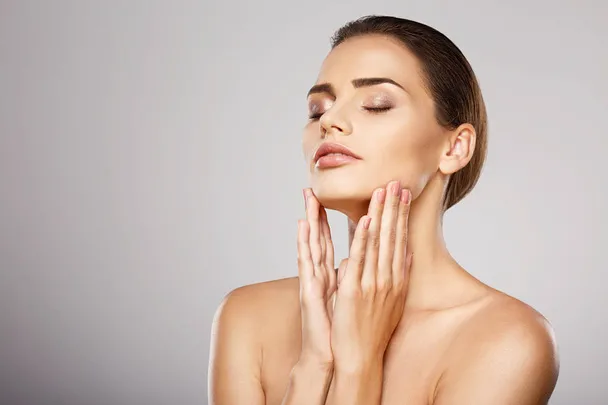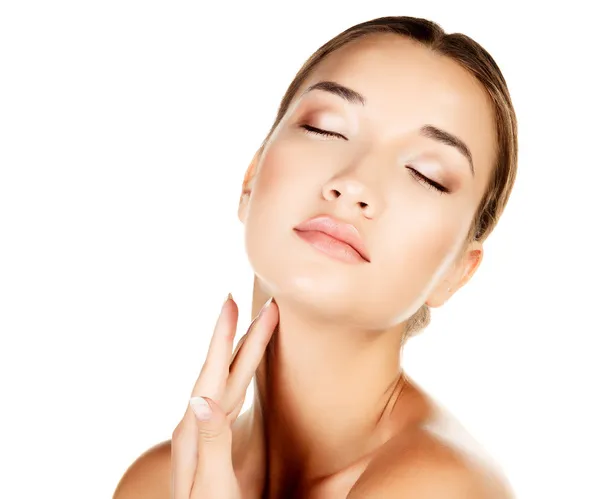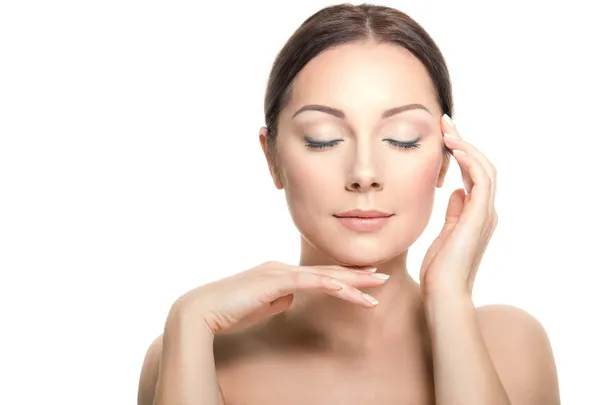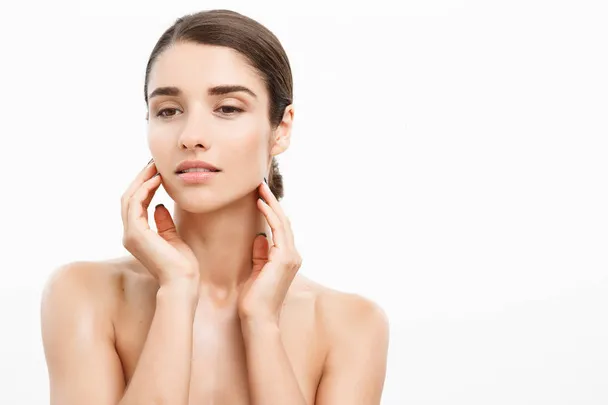Sun Protection: Shielding Your Skin from Harmful UV Rays
Introduction: Sun protection is not just about preventing sunburn; it’s about safeguarding your skin against the damaging effects of ultraviolet (UV) radiation. Exposure to UV rays can lead to various skin concerns, including premature aging, sunburn, and an increased risk of skin cancer. Therefore, adopting effective sun protection measures is essential for maintaining skin health and preventing long-term damage. In this article, we’ll explore the importance of sun protection and provide practical tips for shielding your skin from harmful UV rays.
Understanding UV Radiation
UV radiation, emitted by the sun, encompasses three distinct types: UVA, UVB, and UVC. Among these, UVC rays are predominantly absorbed by the Earth’s ozone layer, preventing their direct contact with the surface. However, UVA and UVB rays possess the capability to penetrate the atmosphere, thereby exerting their effects on the skin. UVA rays, known for their longer wavelengths, have the ability to infiltrate deeply into the skin’s layers, thus promoting premature aging through mechanisms such as collagen breakdown and the generation of free radicals. On the other hand, UVB rays, characterized by shorter wavelengths, primarily influence the skin’s outermost layer. They contribute to the manifestation of sunburn and play a significant role in the development of skin cancer by inducing DNA damage and mutations in skin cells. Understanding the distinct properties and effects of each type of UV radiation is crucial in implementing effective sun protection strategies to safeguard the skin’s health and mitigate the risk of sun-related damage and diseases.
The Importance of Sun Protection
Effective sun protection is crucial for maintaining healthy skin and reducing the risk of sun damage. Here are some key reasons why sun protection should be a priority in your skincare routine:
Prevents Premature Aging: UV radiation accelerates the aging process by breaking down collagen and elastin fibers in the skin, leading to wrinkles, fine lines, and sagging skin. Collagen and elastin are essential proteins that maintain skin elasticity and firmness. However, prolonged exposure to UV rays can degrade these proteins, resulting in the loss of skin structure and resilience. This breakdown of collagen and elastin fibers contributes to the formation of wrinkles, fine lines, and sagging, giving the skin an aged appearance. Additionally, UV radiation can also cause oxidative stress, leading to the production of free radicals that damage skin cells and accelerate aging further. Therefore, protecting the skin from UV exposure through measures such as sunscreen use and sun avoidance is crucial for maintaining a youthful complexion and preventing premature aging.
Reduces Sunburn Risk: Sunburn is a visible sign of skin damage caused by excessive exposure to UVB rays, which are responsible for causing sunburn and contributing to the development of skin cancer. UVB radiation penetrates the outer layer of the skin, causing inflammation and cellular damage that manifests as redness, pain, and blistering. Sunscreen helps to prevent sunburn by absorbing or reflecting UVB rays, reducing their ability to penetrate the skin and cause damage. By applying sunscreen regularly and reapplying it as needed, individuals can lower their risk of sunburn and minimize the harmful effects of UV radiation on their skin.
Lowers Skin Cancer Risk:
Prolonged exposure to UV radiation increases the risk of developing skin cancer, including melanoma, squamous cell carcinoma, and basal cell carcinoma. UV radiation damages the DNA in skin cells, leading to mutations that can trigger uncontrolled cell growth and tumor formation. Melanoma, the deadliest form of skin cancer, is often linked to intense and intermittent sun exposure, such as sunburns during childhood. Squamous cell carcinoma and basal cell carcinoma, although less lethal, are also associated with cumulative UV exposure over time. Sun protection measures, such as wearing sunscreen with a high SPF, seeking shade, wearing protective clothing, and avoiding outdoor activities during peak sun hours, can help reduce the risk of skin cancer by minimizing UV exposure and protecting the skin from harmful radiation.
Prevents Hyperpigmentation: UV exposure can trigger the overproduction of melanin in the skin, leading to dark spots, freckles, and uneven skin tone. Melanin is the pigment responsible for giving skin its color, and its production increases as a defense mechanism against UV radiation. However, excessive sun exposure can cause melanocytes, the cells that produce melanin, to become hyperactive, resulting in the formation of hyperpigmentation. Sun protection plays a crucial role in preventing hyperpigmentation by shielding the skin from UV rays and inhibiting melanin production. By wearing sunscreen daily and limiting sun exposure, individuals can maintain a more even complexion and reduce the appearance of dark spots and pigmentation irregularities caused by UV damage.
Practical Sun Protection Tips
To effectively shield your skin from harmful UV rays, incorporate the following sun protection strategies into your daily routine:
Wear Sunscreen: Sunscreen is a crucial component of sun protection and should be incorporated into your daily skincare routine. When selecting a sunscreen, opt for a broad-spectrum formula with an SPF (sun protection factor) of 30 or higher to ensure protection against both UVA and UVB rays. Apply sunscreen generously to all exposed areas of the skin, including the face, neck, arms, and any other areas not covered by clothing. Be sure to reapply sunscreen every two hours, especially if you’re spending extended periods outdoors or engaging in activities that cause sweating or swimming. By wearing sunscreen consistently, you can significantly reduce your risk of sunburn, premature aging, and skin cancer caused by UV radiation exposure.
Seek Shade: Seeking shade is an essential strategy for reducing the risk of sun exposure and protecting your skin from harmful UV rays, especially during the peak hours of solar intensity between 10 a.m. and 4 p.m. When outdoors, whether you’re relaxing in the park, enjoying a picnic, or participating in outdoor sports, make a conscious effort to find shaded areas under trees, umbrellas, or awnings. These natural or artificial structures provide a barrier against direct sunlight, effectively reducing the intensity of UV radiation that reaches your skin. By staying in the shade, you not only shield yourself from the immediate risk of sunburn but also minimize the long-term effects of UV damage, such as premature aging and increased skin cancer risk. Embracing shade as part of your sun protection strategy allows you to engage in outdoor activities safely and comfortably, ensuring that you can enjoy the outdoors while prioritizing your skin’s health and well-being.
Wear Protective Clothing:
Wearing protective clothing is an indispensable component of a comprehensive sun protection regimen, complementing the use of sunscreen to provide enhanced defense against harmful UV radiation. Alongside applying sunscreen, choosing clothing items specifically designed for sun protection offers an additional layer of shielding against the sun’s rays. Opt for garments crafted from tightly woven fabrics that effectively block UV radiation from penetrating through to the skin. Long-sleeved shirts and pants offer extensive coverage, minimizing exposed skin surface area and reducing UV exposure. Additionally, selecting clothing with a UPF (Ultraviolet Protection Factor) rating provides quantifiable sun protection, indicating the level of UV radiation blocked by the fabric. Wide-brimmed hats are essential accessories, offering shade to the face, neck, and ears, areas prone to sun damage and premature aging. Furthermore, donning sunglasses with UV protection lenses shields the delicate tissues of the eyes from harmful UV rays, safeguarding against conditions such as cataracts and macular degeneration. By consciously selecting and wearing protective clothing tailored for sun exposure, you create a physical barrier against UV radiation, fortifying your skin and eyes against potential damage and supporting your overall sun protection efforts.
Avoid Tanning Beds: Steering clear of tanning beds is paramount in safeguarding your skin against the detrimental impacts of UV radiation. These artificial devices emit UV rays, mirroring the harmful effects of natural sunlight exposure, and pose significant risks to skin health. Consistent use of tanning beds heightens the likelihood of developing skin cancer and accelerates premature aging, leading to an array of skin issues such as wrinkles, age spots, and loss of elasticity. Therefore, refraining from tanning bed usage is imperative for maintaining optimal skin health and minimizing the risk of skin cancer development. Instead of subjecting your skin to the dangers of indoor tanning, consider safer alternatives such as self-tanning lotions or sprays. These products offer a sun-kissed complexion without exposing your skin to harmful UV radiation, allowing you to achieve a radiant glow while prioritizing your skin’s well-being. By making informed choices and avoiding tanning beds altogether, you actively protect your skin from unnecessary harm and promote its long-term health and vitality.
Check the UV Index: Stay informed about the UV index in your area and plan outdoor activities accordingly. The UV index provides information about the intensity of UV radiation from the sun and helps you assess the level of sun protection needed for a particular day. When the UV index is high, take extra precautions by applying sunscreen, seeking shade, and wearing protective clothing to minimize sun damage to your skin. By monitoring the UV index regularly, you can make informed decisions to protect yourself from excessive sun exposure and reduce the risk of sunburn and skin cancer.
Conclusion
In conclusion, prioritizing sun protection is paramount for preserving the health and vitality of your skin. By implementing proactive measures such as consistently wearing sunscreen, seeking shade whenever possible, and donning protective clothing, you can significantly reduce your risk of sunburn, premature aging, and skin cancer. Incorporating these sun protection practices into your daily routine is crucial for safeguarding your skin against the harmful effects of UV radiation and maintaining its overall health, radiance, and resilience in the long run. Make sun protection a non-negotiable aspect of your skincare regimen to ensure that your skin remains healthy, radiant, and well-protected for years to come.










